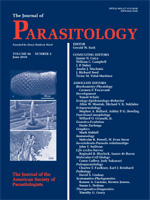Three new species of Ohbayashinema (Nematoda, Heligmosomoidea) are described from localities in western North America and central Asia. Two of these species, Ohbayashinema nearctica n. sp. and Ohbayashinema aspeira n. sp., are parasitic in American pika, Ochotona princeps. Ohbayashinema nearctica is differentiated from the 5 known species of the genus parasitic in Ochotonidae from the Old World by very long spicules and an oblique axis of orientation for the ridges composing the synlophe. Ohbayashinema aspeira, described only from females, is similar to Oh. nearctica based on the number of cuticular ridges at the mid-body. It is mainly differentiated by an uncoiled anterior extremity and by near equal dimensions of the vestibule and the uterus. The third species, Ohbayashinema patriciae n. sp., is parasitic in Gansu pika, Ochotona cansus, from China. It is similar to Ohbayashinema erbaevae parasitic in Ochotona dauurica from Buriatia and Ohbayashinema ochotoni in Ochotona macrotis from Nepal, based on the length of the spicules and the ratio of spicule length to body length. It differs from the former species by possessing a smaller number of cuticular ridges and in the comparative length of the vestibule and infundibulum. Related to Oh. ochotoni by an identical number of cuticular ridges at the mid-body, it differs from this species in having smaller ridges in the dorsal rather than ventral field and in the dimensions of the dorsal ray where rays 9 are less than rays 10. Species of Ohbayashinema appear to be host-specific among the Ochotonidae but had not been previously reported in pikas from the Nearctic. Although much remains to be demonstrated about the diversity for helminths in pikas, it is apparent that factors associated with the assembly and structure of parasite faunas have been complex, involving episodic processes for geographic and host colonization along with coevolutionary mechanisms. Understanding the historical factors, particularly climate-driven fluctuations in geographic range, that have structured these faunas suggests that the current regime for global warming and habitat modification has considerable implications for the continuity of already localized assemblages of hosts and parasites.
How to translate text using browser tools
1 June 2010
Discovery of New Ohbayashinema spp. (Nematoda: Heligmosomoidea) in Ochotona princeps and Ochotona cansus (Lagomorpha: Ochotonidae) From Western North America and Central Asia, with considerations of Historical Biogeography
M-C. Durette-Desset,
K. E. Galbreath,
E. P. Hoberg
ACCESS THE FULL ARTICLE

Journal of Parasitology
Vol. 96 • No. 3
June 2010
Vol. 96 • No. 3
June 2010




